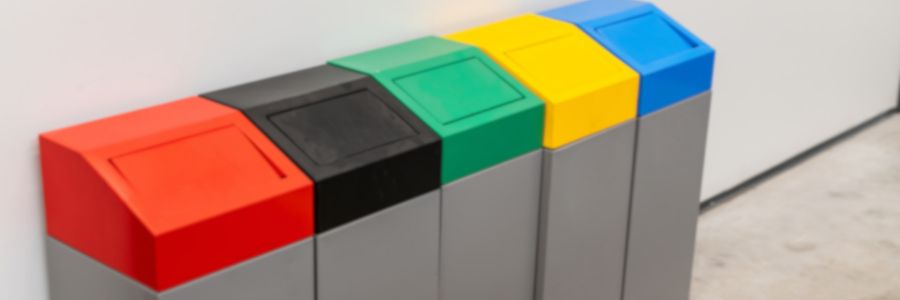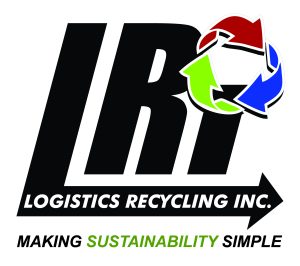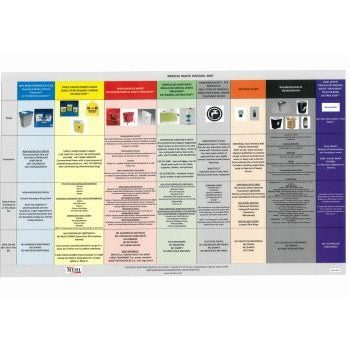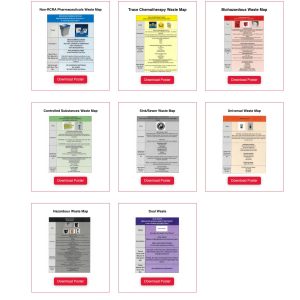
A medical waste map educates staff on what should, and should not, go into color-coded containers.
Medical Waste Segregation
Each facility is responsible for correctly identifying and managing various waste types.
Therefore, posting a medical waste map next to color-coded receptacles helps to ensure staff place waste inside the proper container.
Your facility may have its own medical waste disposal protocol, meaning your map, or container poster, may look slightly different than ours. You are welcome to borrow from our all-encompassing map as a guide to build your own.
Using a medical waste map can help your facility to:
Save Money: You don’t want to pay for items that shouldn’t be in your medical waste bins (i.e., soda cans in the infectious waste bin). Additionally, some waste streams cost more to dispose of and treat than others. For example, dual waste costs more to dispose of than infectious and hazardous waste separately disposed of. Don’t let unnecessary items end up in your most costly waste streams. And never pour hazardous materials down the drain, which leads to our next point:
Stay Compliant: Avoid heavy fines. No one wants to deal with a lawsuit such as this $82 million fine for illegally sewering hazardous waste chemicals. You also don’t want to have an audit turn up hazardous waste in your infectious waste container. Or, become an example such as this $49 million settlement one hospital group had to pay for improper infectious and hazardous waste disposal. If you see something that’s not right, say something so that it can be corrected!
Stay Safe: Potentially infectious waste needs to be in the correct container for proper disposal to eliminate the potential exposure to healthcare workers, waste handlers, and the general public.
About Our Waste Maps
In addition to this all-inclusive waste map, MERI’s library resource page also features individual medical waste posters. Use these to place above each type of container or segregation area. Each poster outlines what items can go into the specific medical waste container and what shouldn’t go inside it.
Ensure Proper Waste Segregation
Ensuring your entire staff understands the difference between hazardous, infectious, and general waste and can place them in the correct container is the best way to reduce your amount of medical waste, prevent exposure, and stay compliant.
Our advice is to be bold in your efforts to segregate medical waste from standard waste. To maximize your strategy, consider the following:
- Survey your facility to determine waste generation rates for specific areas and provide appropriately sized containers to match those needs.
- Provide regular waste bins near medical waste containers to ensure employees make conscious disposal and segregation decisions.
- Train all employees on waste segregation and reinforce it as part of annual training requirements.
- Track waste generation by department and hold department heads accountable for generation and disposal costs.
- Report success and reward staff for their efforts.
###






